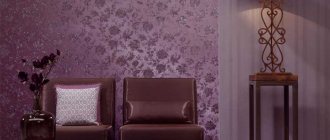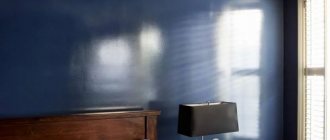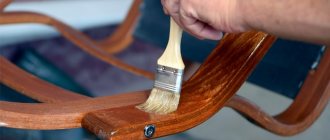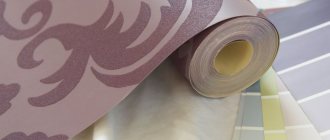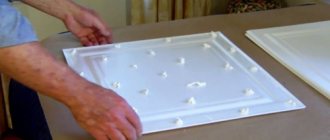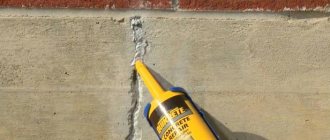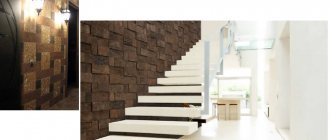Felix
6384 0 0
Felix October 23, 2017 Specialization: philological education. 20 years of experience as a builder. Of these, for the last 15 years he led a team as a foreman. I know everything about construction - from design and zero cycle to interior design. Hobbies: Vocals, psychology, quail breeding.
A wallpaper roller is an indispensable tool in some situations.
Greetings, my dear readers.
Of course, you can work with wallpaper (smooth it, paint it, apply glue, remove it) using your hands, a rag and a brush. But it is better to do this with a roller. It alone can replace several tools. At the moment, there are several types of rollers that can be used when working with wallpaper. They will be discussed in this article.
Peculiarities
The wallpaper roller has a simple design: the yoke is the bent part; lever; cylinder. The tool is convenient for applying different solutions, allows you to speed up the surface treatment process and creates an even distribution of the selected composition without streaks.
A rubber roller, silicone or other material can be additionally equipped with a long handle to process the ceiling surface from the floor.
There are different width options, so choose the appropriate option for different areas. Unlike brushes, a wallpaper glue roller creates an even layer, leaving no layers of material of different thicknesses. At the same time, there are different shaped options that are suitable for different purposes.
The tool is convenient for applying different solutions, allows you to speed up the surface treatment process and creates an even distribution.
Nuances of work
To paint wallpaper or to apply an adhesive composition, you need to completely immerse the product in paint or simply dip it on one side. Then they roll the roller on a certain stand, rolling out the substance. This is important for even distribution of paintwork materials over the surface of the roller.
Now you can proceed to painting the surface. To do this, it is better to take a rubber product.
After finishing work with painting or coating with glue, wash the device or it is better to replace the nozzle with a clean one.
It is important to ensure that the roller is fully adjusted. To do this, it is periodically cleaned so that it scrolls well and does not jam.
It is important to align the roller clearly along the axis. If you do not pay attention to this, the material will be applied in stripes, which means the quality of the coating will be worse.
Types of wallpaper rollers
There are different types of rollers for wallpapering; they are designed for a variety of repair actions. Therefore, in order to understand what type is required for a specific task, you need to know the main existing options.
This will help you understand why you should purchase this or that wallpaper roller. After all, they differ in the cylinder coat, size and other subtleties.
There are different types of rollers for wallpapering; they are designed for a variety of repair actions.
For wallpaper
This roller is used for smoothing wallpaper; it is not applied to the adhesive solution. When the wallpaper strip is moved to the base, there are air gaps under them that need to be knocked out well. Also, a roller for rolling wallpaper helps to obtain a smooth surface.
You can find plastic wallpaper spatulas on the market, but they are not universal. And they are not intended for working with thin fabrics; they will simply tear them. If the wallpaper has a relief type pattern, then the spatula will also harm it.
The rolling roller for wallpaper is made of rubber material, the width varies from 15 to 30 cm.
A wallpaper roller helps to obtain a smooth surface.
For processing joints
A roller for wallpaper joints is necessary to make the connection between the canvases less noticeable. It is made of plastic material, conical in appearance. The joining zones are the most difficult to create adhesion strength, so it is necessary to roll the joint well with a pressure roller to ensure the quality of adhesion. Standard size is 30-45 cm.
A roller for wallpaper joints is necessary to make the connection between the canvases less noticeable.
For corners
Externally it can be called similar to the docking type, but is made narrower. The tool allows you to properly glue corner areas, trim wallpaper and improve the level of adhesion to the base.
The tool allows you to properly glue corner areas.
Needle
On the cylinder, on this type of roller you can see metal needles. A device is used to remove wallpaper. When materials are selected that are resistant to moisture, it is impossible to wet them for removal. Then, using the tool, holes are created, which will then allow water into the canvas and can be removed.
A device is used to remove wallpaper.
Painter
The roller is intended for wallpaper glue. On his top hat is a coat of either sheepskin or a silk synthetic type of material. Due to the presence of fibers, the adhesive solution is collected and distributed in an even layer over the base.
The tool can last a long time due to the ability to replace fur coats. In terms of length, 25-centimeter types are usually used.
The painting device is also used for painting, including wallpaper.
Due to the presence of fibers, the adhesive solution is collected and distributed in an even layer over the base.
Tools and Process Steps
To work you will need the following tools:
- Brush. It is used to apply glue to narrow strips or along the edges.
- Foam roller. Rollers with artificial or natural fur can replace it, but this is the most comfortable one. The quality of the pasting largely depends on which roller is used for the job. Before first use, it must be well saturated with water.
- Bath. Necessary for rolling out the roller; it's easier to use than a whole bucket of glue.
- A rag or sponge made of foam rubber.
Stages of gluing:
- Carefully study the instructions and all symbols on the roll. Determine application technique.
- Prepare the composition according to the instructions on the package. It is important to follow the recommendations on water temperature and the duration of swelling of the mixture. A large sieve will help you get rid of lumps, through which you need to pass the entire composition (read more about how to cook and use and where to store the paste here).
- When applying to sheets, you need to prepare a place for their placement. This can be done on the floor or on a large table. When applying to the walls, you need to make sure that they are clean, free of dust and small debris.
- Wet the brush and roller with plain water.
- Spread a protective layer of paper on the floor or table and lay out the linens. It is important that the paper does not fade or print on the roll when wet. This is especially true for white and light wallpapers.
- Apply glue to the center of the sheet depending on the wallpaper material: a little on thin ones, more on thick ones, allowing for absorption.
- Spread with a roller along the entire length: from edge to edge of the opposite side. Then move to the near half, apply from edge to edge along the length.
- Separately coat the edges with a brush. Blot any excess that gets on the front side with a rag or sponge.
- Thin wallpaper can be pasted. Thick ones - leave to swell, folding the edges towards the center and setting aside for 5-10 minutes. Then stick it on.
- If it is necessary to apply it to the wall, it is better to do it in two layers. The first serves as a primer, the second is where the wallpaper is directly glued.
Vinyl
Gluing technology:
- Prime the wall well.
- Next, proceed as indicated in the instructions from the roll: Either smear the vinyl sheet and leave it to soak, or lubricate the wall.
- The only possible way of docking is end-to-end. It is important to note that when saturated, this type of fabric stretches greatly.
Non-woven
Let's consider whether it is possible to apply glue to non-woven covering and what attention should be paid to. Pasting instructions :
- No adhesive is applied to this type of wallpaper. It is important to pay attention to careful processing of the surface for non-woven finishing, where the glue is applied in a thick layer, preferably twice. It is important not to miss a single centimeter when applying.
- They are glued end to end, without overlap.
- It is convenient that non-woven wallpaper will not tear, as it is mounted on the wall dry. The sheet is convenient to transfer and correct in case of an error.
Paper
Stages of gluing:
- Apply glue to the inner surface of the canvas, fold the edges towards the center, leave to swell.
- Straighten the canvas, coat it with glue again, paying attention to the edges and corners.
- If the sheet curls up, it means it is not ready yet; it needs time to soak.
- Gluing - overlap.
Choosing a roller for applying glue to the wall
Which wallpaper glue roller should I use for better results? The question is interesting for beginners; for the surface itself, it doesn’t matter which option they use. This way you can use painting types, but sometimes it is more practical to choose foam rubber ones for the wall. This is due to the following advantages:
- Absorption and release of excess occurs optimally;
- If you monitor the amount of impregnated glue when rolling a roller along the ditch, then the solution will not drip from the tool when working with the wall;
- The composition is distributed evenly over the base;
- The excellent ability of foam rubber to absorb glue allows, if there is excess thickness, to simply remove it by re-rolling it;
- After gluing is completed, you can simply clean the tool so that you can use it again.
The best size option for a roller for adhesive solution is 200 mm.
You can use painting types, but sometimes it is more practical to choose foam rubber types for the wall.
Which roller to choose for applying glue to wallpaper
Wallpaper is more fragile than the base; therefore, it is advisable to choose a paint roller with a fur coat for gluing wallpaper. The length of the fibers required is from 50 mm to 100 mm. Width 20-25 cm.
But there are masters who admitted that the use of a foam roller did not harm the process, and no significant difference was found. Saving money is considered a plus. In this case, the repairman makes the choice based on personal preferences.
Wallpaper is more fragile than the base; therefore, it is advisable to choose a paint roller with a fur coat for gluing wallpaper.
The best way to apply glue
A rubber roller for wallpaper or another type, or choose a brush for applying the product, you need to decide in advance in order to get the desired result from the process. Knowing the advantages and disadvantages of each tool helps in the decision.
Brushes Features:
- Can apply the product in difficult areas;
- Can cover joints and seams;
- Coating will take a long time;
- High price;
- One-time use, long wash;
- Hairs fall off the brush, so unnecessary elements will remain on the wall.
Roller Features:
- Fast surface treatment;
- A variety of roller types makes it possible to apply the product to various types of canvases;
- Can be used many times;
- Large size, you won’t be able to handle the corners with a regular roller.
Hairs fall off the brush, so unnecessary elements will remain on the wall.
Is it necessary for vinyl?
Attention
When gluing vinyl sheeting, the place where the composition is applied depends on the base of the finish. Technologies may vary.
It is important to read the instructions carefully:
- Vinyl on paper - require application to a roll, and not to the wall (what are the features of gluing vinyl wallpaper?).
- On a non-woven backing - placed on a wall that has already been coated with an adhesive mixture; there is no need to smear the canvases themselves (how to properly glue wallpaper on a non-woven backing?).
- Self-adhesive - a rare type. These must either be moistened with water or the protective film on the back side must be peeled off.
Which roller to choose for wall adhesive
Rubber pressure roller or choosing a completely different option, a beginner may get confused when he sees the assortment of products. Therefore, when choosing, you should take budget options as a basis. Cheap foam rollers give good results; you can get by with such a device.
Professionals like to use a joint roller, which can handle hard-to-reach areas and efficiently spread glue over the surface.
Cheap foam rollers give good results; you can get by with such a device.
Which roller to choose for wallpaper
For this task, a tool made of foam rubber with large slots is considered a good option. It is necessary to understand that the surface must be even, it is well coated with an adhesive solution before gluing. The width is suitable for 20-30 cm types.
Among the positive aspects of foam devices are:
- There is no need to wait long for the glue to absorb the material well;
- The layer is made even, the entire base is coated;
- Just wash it off.
The surface should be even, it should be well coated with adhesive solution before gluing.
A roller is a device that can greatly simplify wallpapering. There are options for all types of wallpaper work. If you choose the right tool, you can carry out repairs faster, and the result will be durable, without flaws. So, for the wall, you can choose foam rollers; for working with wallpaper, a paint type with a fleecy coat is more suitable. It is also important that the handle on the tool is comfortable for the hand.
Application of adhesive composition
Whether it is more effective to apply glue - on the canvas or on the walls - is impossible to answer unequivocally. The technology depends on the type of wallpaper. Some need soaking time to swell. Others do not need extra contact with the adhesive - it is applied to the wall. The most effective way is to follow the instructions. Standard requirements depending on type :
- Paper base . They need to be coated with glue and rolled in a special way for impregnation. Then apply glue to the wall where you plan to install the paper sheet. Wallpaper from some manufacturers does not require such a procedure; there is a note about this in the instructions.
- On a non-woven basis . Glue cannot be applied to these, especially heavy non-woven ones. Only apply glue to the wall. There are some exceptions: some manufacturers indicate in the instructions that glue can (but not necessarily) be applied to these non-woven wallpapers.
- Vinyl . The technology for working with these materials depends on their basis. It can be applied both to a roll and to a wall.
Therefore, the most effective thing is to follow the instructions from the instructions. Special symbols on the label will help you understand the technology:
- a vessel with water and a roll - just moisten the back side with water;
- brush and vertical stripe - means the need to apply only to the wall;
- horizontal strip (in the form of a roll) and a brush - you need to lubricate the wallpaper with glue and let it soak.
